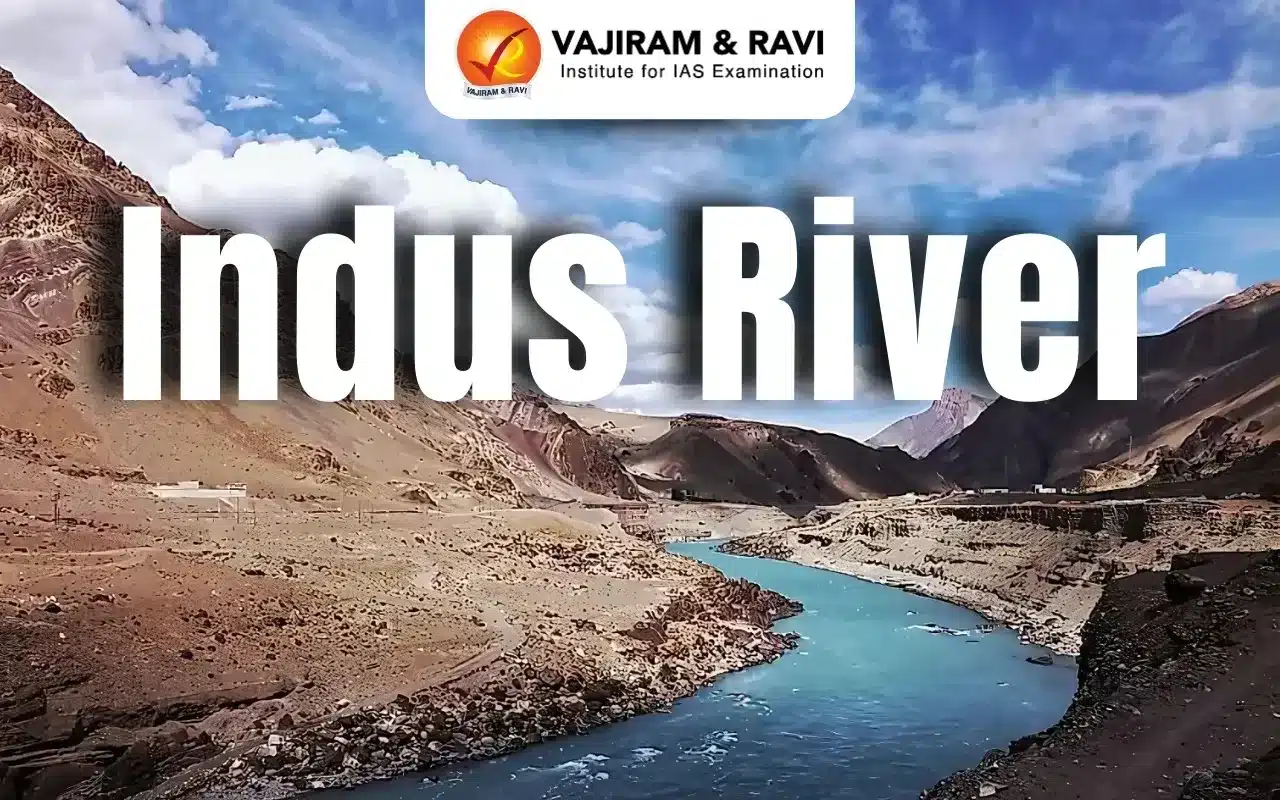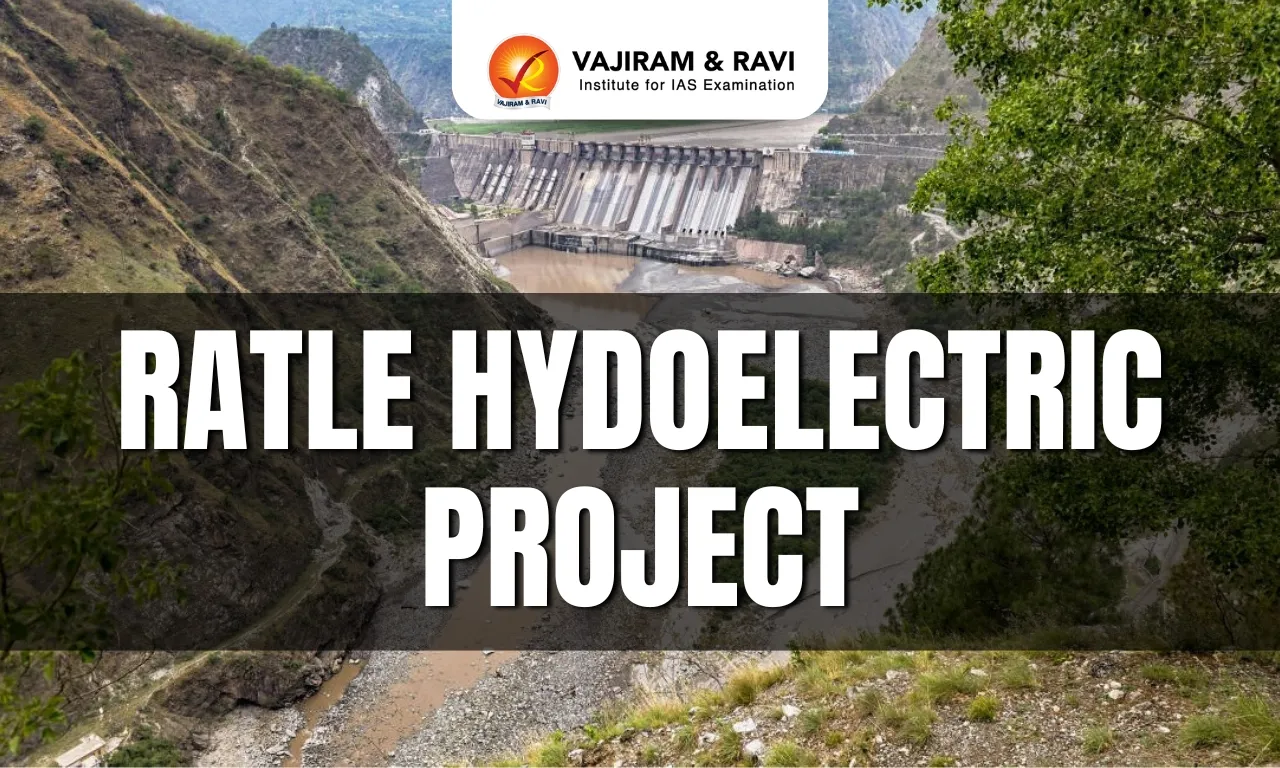Indus River Latest News
Pakistan has discovered vast gold reserves worth approximately Rs 80,000 crore in the Indus River bed, potentially boosting the country’s struggling economy
About Indus River
- Origin: The Indus River is one of the longest rivers in Asia. It rises from Mansarovar in Tibet at an elevation of about 5182 m and flows for about 2880 km up to its outfall into the Arabian Sea. The length of the river in India is 800.75 km.
- Tributaries: Its principal tributaries are the Sutlej, the Beas, the Ravi, the Chenab and the Jhelum.
- Countries Flowing Through: It flows through China, India, and Pakistan, serving as a vital water source for agriculture, hydropower, and human consumption.
- The Indus flows through India only through the Union Territory of Ladakh.
- Drainage System: The Indus basin extends over an area of 11,65,500 sq. km and lies in Tibet, India, Pakistan and Afghanistan.
- The drainage area in India is 321289 sq. km. which is nearly 9.8% of the total geographical area of the country.
- It is bounded on the north by the Karakoram and Haramosh ranges, on the east by the Himalayas, on the west by the Sulaiman and Kirthar ranges and on the south by the Arabian Sea.
- Historical Significance: The river has played a crucial role in the development of ancient civilizations, including the Indus Valley Civilization, one of the earliest urban cultures.
Indus River Civilisation
- Indus Valley civilization is the earliest known urban culture of the northwestern regions of the Indian subcontinent.
- It is one of the world’s three earliest civilizations along with Mesopotamia and ancient Egypt. This civilization flourished from approximately 3300 BCE to 1300 BCE.
- Most of the sites discovered earlier, Harappa and Mohenjo-Daro, are present in the Indus valley which gives the name to it. Harappa was the first excavated site therefore, it is also called Harappan culture.
Indus River FAQs
Q1: What is Indus River called in India?
Ans: The Indus River is called Sindhu in Sanskrit, which is its name in India.
Q2. Where do 5 rivers meet Indus?
Ans: Jhelum and Ravi join Chenab, Beas joins Sutlej, and then Sutlej and Chenab join to form Panjnad, 10 miles north of Uch Sharif in Muzaffar Garh district.
Q3. Why is the Indus River so important?
Ans: The Indus River has been important since early civilization. It provided humans with a source of water when little other water could be found in the region.
Source: DH
Last updated on December, 2025
→ Check out the latest UPSC Syllabus 2026 here.
→ Join Vajiram & Ravi’s Interview Guidance Programme for expert help to crack your final UPSC stage.
→ UPSC Mains Result 2025 is now out.
→ UPSC Notification 2026 is scheduled to be released on January 14, 2026.
→ UPSC Calendar 2026 is released on 15th May, 2025.
→ The UPSC Vacancy 2025 were released 1129, out of which 979 were for UPSC CSE and remaining 150 are for UPSC IFoS.
→ UPSC Prelims 2026 will be conducted on 24th May, 2026 & UPSC Mains 2026 will be conducted on 21st August 2026.
→ The UPSC Selection Process is of 3 stages-Prelims, Mains and Interview.
→ UPSC Result 2024 is released with latest UPSC Marksheet 2024. Check Now!
→ UPSC Prelims Result 2025 is out now for the CSE held on 25 May 2025.
→ UPSC Toppers List 2024 is released now. Shakti Dubey is UPSC AIR 1 2024 Topper.
→ UPSC Prelims Question Paper 2025 and Unofficial Prelims Answer Key 2025 are available now.
→ UPSC Mains Question Paper 2025 is out for Essay, GS 1, 2, 3 & GS 4.
→ UPSC Mains Indian Language Question Paper 2025 is now out.
→ UPSC Mains Optional Question Paper 2025 is now out.
→ Also check Best IAS Coaching in Delhi

















